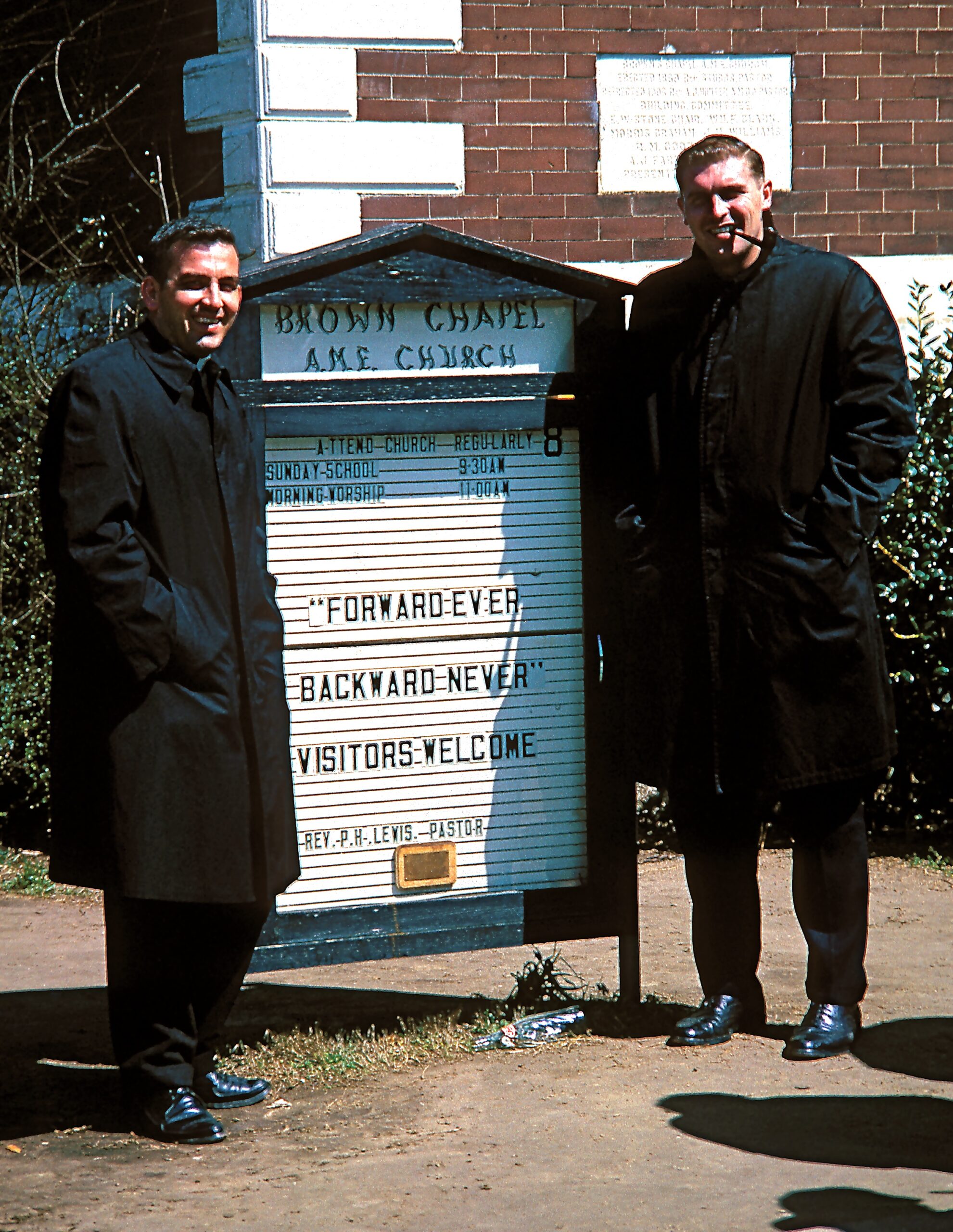
Standing up for civil rights
Elmhurst resident Bernard Kleina and a colleague are pictured here at Brown Chapel at the now-infamous march for civil rights in Selma on March 25, 1965.
On Thursday, Mar. 4, the Elmhurst Art Museum (EAM) will open a new soul-stirring exhibition reflecting on historical and contemporary responses to fair housing in the Chicagoland area. “In Focus: The Chicago Freedom Movement and the Fight for Fair Housing” features rare color photographs of 1960s civil rights marches by the activist and photographer Bernard Kleina. The show also includes a variety of local responses to housing issues including first-person accounts, historical photographs, and a project by the Museum’s Teen Art Council and York Community High School’s Black Student Union.
The centerpiece of the exhibit are 40 photos by Kleina, who started his journey as a lifelong activist while serving as a priest and Dean of Boys at Immaculate Conception—across the street from the museum, where his works are now shown. For more than 40 years he served as the Director of HOPE Fair Housing Center, which is based in Wheaton and serves 30 counties in Northern and North Central Illinois, where he earned the title “The Most Disliked Man in DuPage County.”
Kleina generously provided these retrospective insights about his civil rights start:
“On Sunday, March 7, 1965, I watched on TV the news reports of men and women who were marching for voting rights, being beaten, tear-gassed and trampled by horses, after crossing the Edmund Pettus Bridge in Selma. At that moment, there was no turning back; I knew I had to do something more than just [watch] the TV reports. That ‘something’ turned out to be flying to Selma with a teacher/friend to respond to Dr. King’s call for clergy to come to Selma and join them in standing up for voting rights.
“At the time I was a Catholic priest. I taught and was Dean of Boys at Immaculate Conception High School in Elmhurst. Ironically, that decision to go to Selma was made literally just a stone’s throw from where the Elmhurst Art Museum is now located.
“As a priest and teacher, I felt I had to go, not just for myself and the people of Selma, but as an example to my Congregation and my students at Immaculate Conception. I also went to Selma because I thought I could be of some help to the people there in their fight for voting rights.
“I quickly realized that Selma did more for me than I could ever do for Selma. The people there taught me justice, courage, patience, compassion and a true understanding of history.
“Back home in Elmhurst, students and friends had organized a ‘Sympathy for Selma March,’ most probably the first of its kind in Elmhurst or its neighboring suburban communities.
“When I returned to Elmhurst from Selma, I was welcomed by a Church packed with people who supported my mission. When I addressed them from the pulpit, I was quick to point out that I was wearing the very same clothing that I wore when I was arrested in Selma. So, I began my talk with an apology for showing up in my ‘prison’ clothes.
“This was a fitting start to my fight for fair housing, Civil Rights and racial equality.
“Looking back, it seems impossible that my life would change so dramatically after watching the news reports on TV, but that’s exactly what happened.”
For additional insights into Kleina’s life and activism be sure to watch the “Virtual Artist Talk: The Most Disliked Man in DuPage County, Bernard Kleina” available starting Thursday, Mar. 11 on the museum’s Museum From Home web page. The exhibition “In Focus: The Chicago Freedom Movement and the Fight for Fair Housing” opens on Thursday, Mar. 4.
